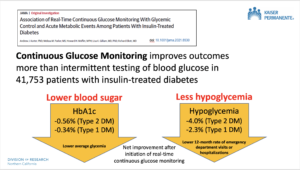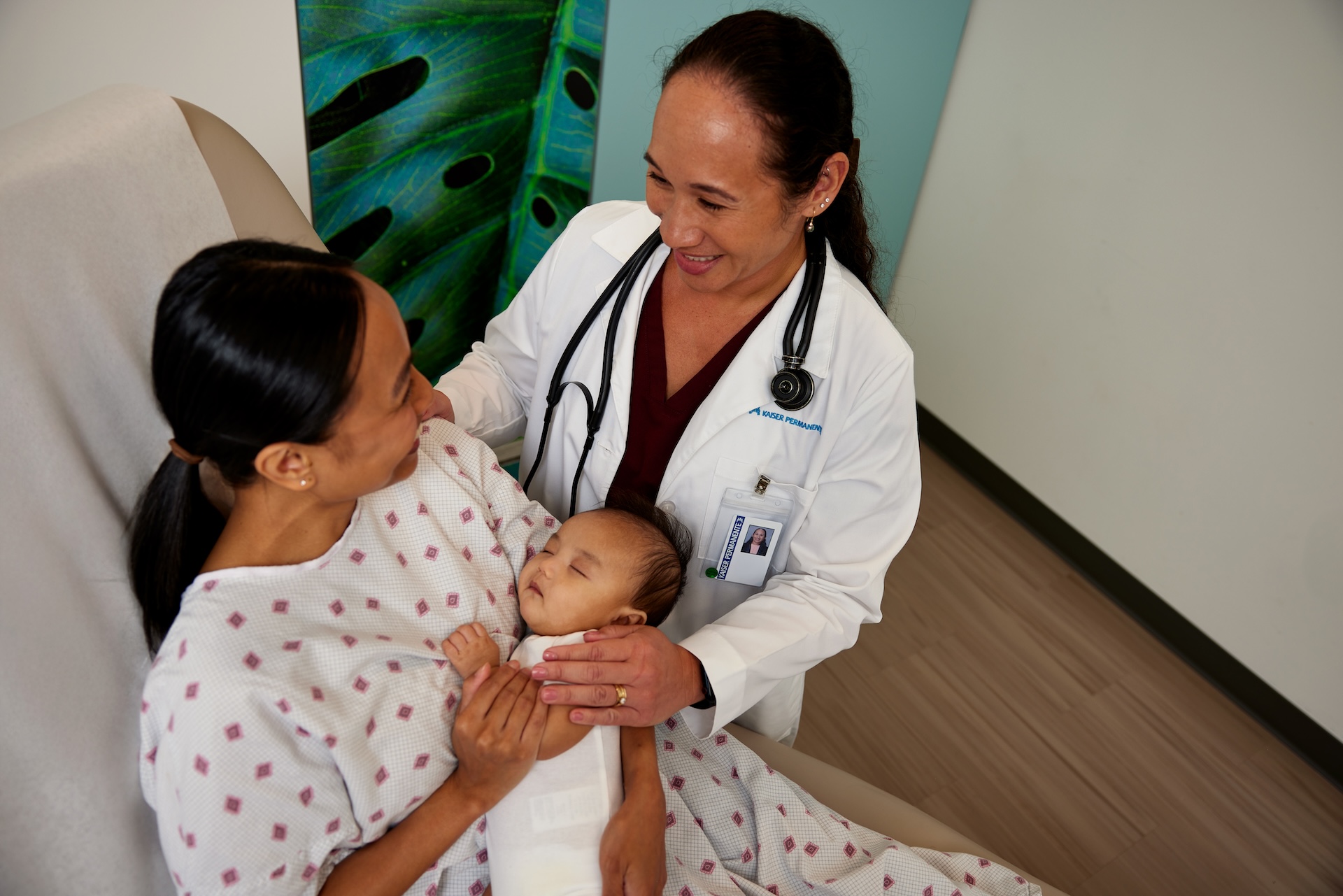Kaiser Permanente study finds monitors improve blood sugar control in selected insulin-treated patients
In patients with insulin-treated type 2 diabetes, the use of continuous glucose monitors is associated with better blood sugar control and fewer visits to the emergency room for hypoglycemia, a Kaiser Permanente study published June 2 in the journal JAMA found.
The monitors have previously been shown to improve glucose control in patients with type 1 diabetes and are now the standard of care for these patients.

“The improvement in blood sugar control was comparable to what a patient might experience after starting a new diabetes medication,” said the study’s lead author Andrew J. Karter, PhD, a senior research scientist with the Kaiser Permanente Division of Research.
The retrospective, comparative effectiveness study included 5,673 patients with type 1 diabetes and 36,080 patients with type 2 diabetes treated with insulin who were self-monitoring their blood glucose. Between January 2015 and December 2019, on the recommendation of their doctors, 3,462 of the patients with type 1 diabetes and 344 of those with type 2 diabetes began using continuous glucose monitors.
Using statistical techniques that mimicked randomization in a clinical trial, the researchers evaluated before-and-after results among patients who initiated use of a continuous glucose monitor with those who did not. These analyses showed that continuous glucose monitors were associated with a decline in levels of HbA1c, a laboratory test used in the diagnosis and treatment of diabetes that measures blood sugar levels. The monitors also reduced emergency department visits and hospitalizations for hypoglycemia, or very low blood sugar. Hypoglycemia increases the risk for falls, cardiovascular disease, dementia, and death.
“Blood sugar levels that go too low can be dangerous,” said the study’s senior author Richard Dlott, MD, an endocrinologist and the medical director of population care for The Permanente Medical Group. “This study shows that continuous glucose monitors helped people stay close to their glucose targets without going too low.”
The improvement in blood sugar control was comparable to what a patient might experience after starting a new diabetes medication.
— Andrew J. Karter, PhD
For decades, people with diabetes have used finger sticks to test their blood sugar levels. Since 2017, Medicare has covered the cost of continuous glucose monitors for patients with diabetes who met certain qualifications. (Today, almost all people with type 1 diabetes qualify.) Continuous glucose monitors use a thin metallic sensor to detect blood sugar levels just under the skin. The sensor transmits blood sugar readings every 5 minutes to a receiver or smartphone. Continuous glucose monitors are available only with a prescription.
 The study looked at patients with diabetes who started using continuous glucose monitors as prescribed by their doctor. To qualify under Medicare guidelines, patients generally must give themselves 3 or more shots of insulin daily or use an insulin pump, perform blood glucose testing 4 or more times a day, and consistently communicate with a diabetes team every 3 to 6 months.
The study looked at patients with diabetes who started using continuous glucose monitors as prescribed by their doctor. To qualify under Medicare guidelines, patients generally must give themselves 3 or more shots of insulin daily or use an insulin pump, perform blood glucose testing 4 or more times a day, and consistently communicate with a diabetes team every 3 to 6 months.
“Selective prescribing of continuous glucose monitors may partially explain the benefits we saw in these patients with type 2 diabetes,” said Karter, who is also the associate director for the Health Delivery Systems Center for Diabetes Translational Research, sponsored by the National Institute of Diabetes and Digestive and Kidney Diseases. “Doctors appeared to have preferentially prescribed monitors to patients with a history of hypoglycemia or at high risk of hypoglycemia.”

The next step, the researchers say, is to determine if there are other patients with type 2 diabetes whose blood sugar would be better and more safely controlled with continuous glucose monitors. “This study found that patients who used continuous glucose monitors had very good results compared to those who continued only with intermittent testing using finger sticks,” said Dlott. “We now need to determine whether there are other patients who might also benefit, even if they don’t meet all of the Medicare criteria. The newest technology isn’t always better for everybody. We need to identify the people who are most likely to benefit.”
The study was supported by an independent investigator award from Dexcom and funding from the National Institute of Diabetes and Digestive and Kidney Diseases. The sponsors had no role in the design or conduct of the study; collection, management, analysis, and interpretation of data; preparation, review, or approval of the manuscript; or in the decision to submit the manuscript for publication.
Co-authors include Melissa M. Parker, MS, and Howard H. Moffet, MPH, of the Division of Research and Lisa K. Gilliam, MD, PhD, of The Permanente Medical Group.
# # #
About the Kaiser Permanente Division of Research
The Kaiser Permanente Division of Research conducts, publishes and disseminates epidemiologic and health services research to improve the health and medical care of Kaiser Permanente members and society at large. It seeks to understand the determinants of illness and well-being, and to improve the quality and cost-effectiveness of health care. Currently, DOR’s 600-plus staff is working on more than 450 epidemiological and health services research projects. For more information, visit divisionofresearch.kaiserpermanente.org or follow us @KPDOR.





Comments (0)